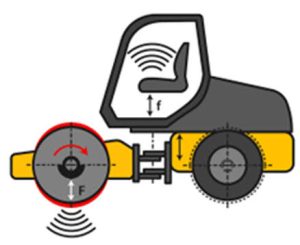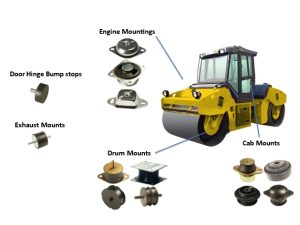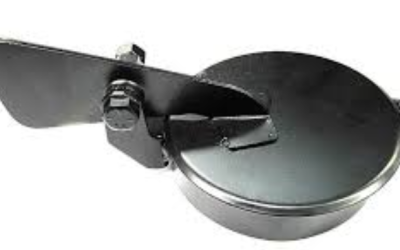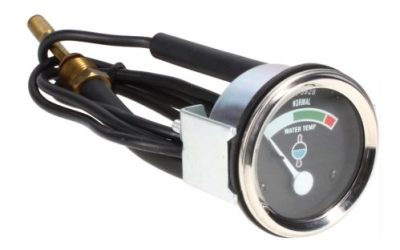Rubber Compactor Mounts: A Critical Component in Vibratory Equipment
In construction and road building, ground preparation is everything. Before any structure can be built or asphalt laid, the soil or aggregate must be compacted to create a stable, load-bearing base. Without this, even the best construction materials won’t perform as expected.
To achieve this, contractors rely on compaction equipment like vibratory rollers, plate compactors, rammers, and excavator-mounted attachments. Central to their function is the generation of controlled vibration—and that’s where rubber compactor mounts come in.
 All vibratory compaction equipment works by producing an oscillating motion—rapid back-and-forth movement of a plate or drum. To make this motion effective while absorbing the resulting forces, machines use rubber mounts. These are typically installed in shear or at angles (often in a V-formation) to maximize amplitude while controlling stiffness.
All vibratory compaction equipment works by producing an oscillating motion—rapid back-and-forth movement of a plate or drum. To make this motion effective while absorbing the resulting forces, machines use rubber mounts. These are typically installed in shear or at angles (often in a V-formation) to maximize amplitude while controlling stiffness.
This setup enables the efficient transfer of energy into the ground, helping compact soil or asphalt quickly and evenly.
Protecting the Operator and the Machine
Rubber mounts also play a major role in protecting operators and extending machine life. By isolating the vibration from the machine’s chassis, cabin, handles, or seat, the mounts reduce exposure to harmful vibration levels. This is essential for meeting safety standards such as ISO 2631 (whole-body vibration) and ISO 5349 (hand-arm vibration).
In addition, well-designed mounts help prevent fatigue damage to the equipment by minimizing the transmission of shock and vibration to structural components.
What to Look for in a Quality Mount
Compaction is one of the most demanding applications for rubber mounts. The mounts must be engineered for high dynamic loads and tailored to specific working conditions. Key considerations include:
- Required vibration amplitude
- Load-carrying capacity
- Resistance to heat build-up (hysteresis)
- Durability of the rubber-to-metal bond
- Performance under repeated stress cycles
Using low-grade rubber or poor bonding techniques can lead to premature failure—even if the part looks identical to a high-quality original.
When specifying mounts, it’s important to use products made from resilient, high-tensile compounds that have been properly moulded and tested for dynamic conditions.
Mounts for Different Compaction Applications
 Different types of compaction equipment require different mount designs:
Different types of compaction equipment require different mount designs:
- Drum Mounts: These support the weight of the machine while transmitting vibratory energy from the hydraulic motor to the roller drum—commonly used in road rollers.
- Plate Mounts: Found in plate compactors, these mounts deliver energy from the motor to the base plate, enabling vibration while also supporting machine loads.
Each design must be matched to the machine’s frequency, force requirements, and operating environment.
Specifying the right mount isn’t just about selecting the correct size. It involves a deep understanding of vibration dynamics, material behaviour, and stress distribution. At Dahbashi Engineering, our technical team supports clients in choosing the right solution by offering:
- Application assessment and consultation
- Vibration and frequency analysis
- Design and material recommendations
Whether you’re maintaining a compact plate compactor or designing a new 10-ton vibratory roller, we help ensure reliability and long service life from your equipment.
Engineering Support for Custom Applications
Rubber compactor mounts might not be the most visible part of your equipment, but their impact is significant. When chosen and installed correctly, they improve compaction performance, protect machine components, and enhance operator safety.
If you need help with selection or design, Dahbashi’s engineering team is ready to support you with technical advice and reliable product options built for tough operating conditions.



